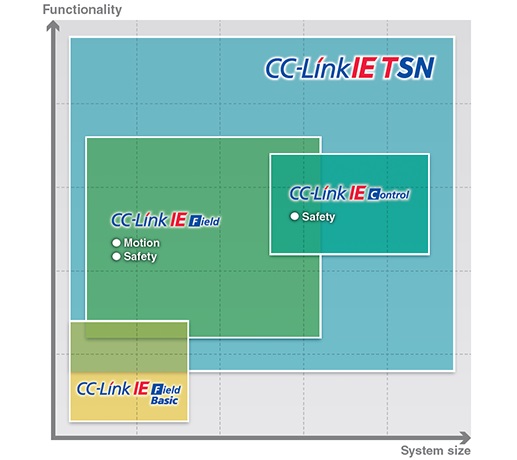

With the completion of the CC-Link IE TSN specification, the CC-Link Partner Association (CLPA) is setting the stage for a new development wave of industrial devices running on CC-Link IE that can now take advantage of Time Sensitive Networking (TSN) technology. TSN is a set of additional standards related to standard IEEE Ethernet. Initially developed for the automotive industry, TSN quickly became popular with industrial network consortia because of its ability to support determinism.
The lack of deterministic behavior on Ethernet was the very reason why, decades ago, industrial users were slow to adopt Ethernet in the factory and opted instead to develop their own networks. It is also the reason why industrial network consortia like CC-Link were founded. To make Ethernet suitable for industrial use, these organizations adapted and sometimes even modified Ethernet to achieve the performance and behavior necessary for their applications. Now, by adopting TSN, industrial networks can standardize on a single mechanism for synchronizing industrial devices.
Using Ethernet in the factory already offers a host of advantages. Ethernet is a well-established and widely understood technology that supports the exchange of both critical and non-critical data on a fast, single network running at 100 Mbps (CC-Link IE also supports 1 Gbps). Network diagnostics are easy by using general purpose Ethernet diagnostic tools compliant with SNMP, and time synchronization of compatible devices makes it easy to investigate the cause of problems. Most of all, as an IP-based network, Ethernet allows users to connect their devices via the internet to the “rest” of the world, unleashing a previously unheard-of potential to share information in real-time for further data analysis or devices diagnostics. At the same time, users must take steps to create a networking environment that protects devices and systems from cybersecurity threats.
By implementing TSN, the CLPA is taking CC-Link IE a step further into the future. For industrial users, the most obvious example is hard, real-time motion control. In the past, mechanical couplings and gears were used to synchronize multiple axes in a machine. Today, dozens or even hundreds of servo-driven axes can be synchronized via Ethernet – provided the “version” of Ethernet used can support this complex task. With TSN, this is now possible using a standard, IEEE-sanctioned mechanism with a cycle time of better than 31.25µs.
Beyond real-time motion control, time synchronization and determinism are important for a wide variety of other industrial applications, not all of them at blindingly high speeds. This includes applications in which it is important that events happened at the same time, regardless of speed, or in which events are time-stamped to prove later that they happened in a certain sequence.
For an industrial network solution like CC-Link IE to be successful, it needs to be supported by a large and diverse community of suppliers and users. According to CLPA, its community consists of about 3000 members (70% located outside of Japan). Of those, 52 supplier members have already indicated their intent to develop products compatible with the new CC-Link IE TSN specification. The organization expects the first products to be launched in 2019.

